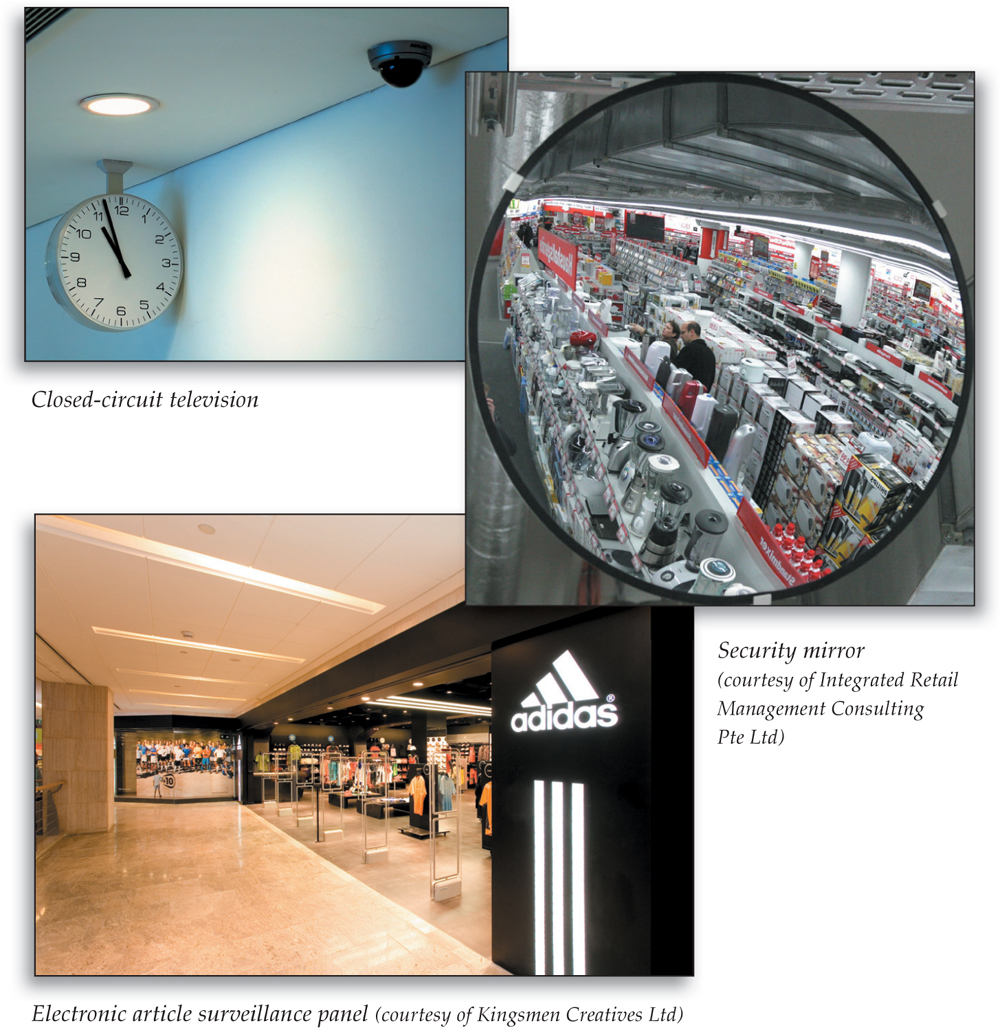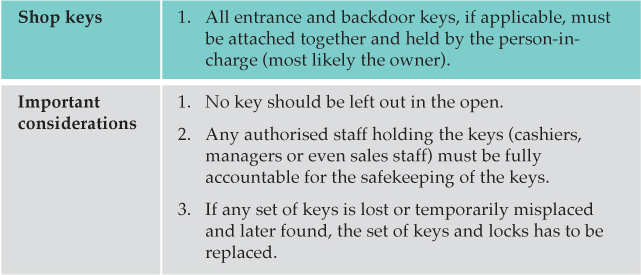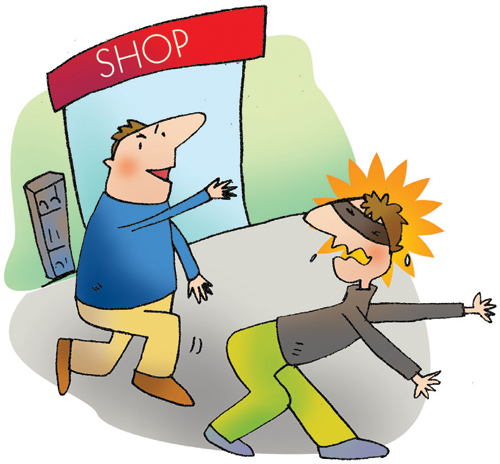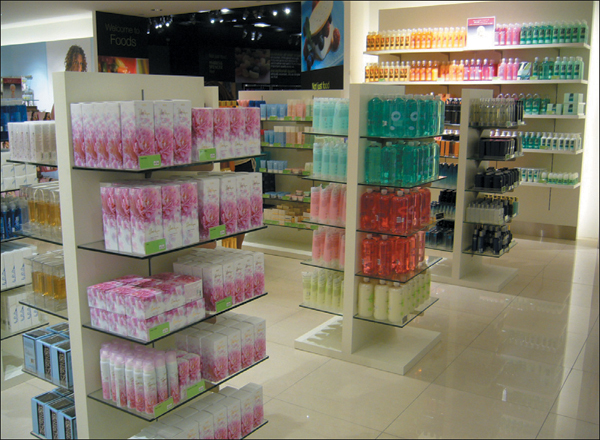Chapter 8. Shop Safety and Security

The main objective of opening a shop is to invite shoppers into the premises to browse and buy. Retailers clean their shops, arrange the fixtures properly and beautify the displays to create a good impression so as to make sure that shoppers feel comfortable inside their shops. Is there anything else retailers need to do?
Shop Safety
Retailers have to ensure the safety of shoppers in the shop. Shoppers, too, expect the retailers to provide a hazard-free shopping environment.
Accidents generate bad publicity for retailers.
Once shoppers know that a particular shop is prone to accidents, they avoid the place and choose to shop somewhere else. Even if an accident occurs only once, shoppers will avoid the place for a period of time before they resume their shopping there. In both cases, the shop’s reputation is tarnished.
What about the employees? It is also the retailer’s responsibility to ensure the safety of the staff working on the premises.
Preventive measures
Prevention is better than cure. Some of the preventive measures are discussed below.
Staff’s responsibilities
1. Have a ‘safety first’ attitude
• Staff may not be able to anticipate every accident but they can help to prevent most of it.
• Accidents cost money and bring inconvenience to shoppers and staff. In serious cases, accidents can result in injuries and even death.
• Having a ‘safety first’ attitude is a good start to prevent accidents. Every time you need to do something, think of safety first.
2. Keep a lookout for dangerous signs
• Be aware of situations that are hazardous and take actions to rectify them.
• Some examples are:
– Empty boxes on aisles
– Defective fixtures such as broken glass or chipped fixtures
– Shelves with overloaded merchandise
– Torn carpets that can cause shoppers to trip
– High displays that may topple
– Overused electric outlets
– Dangling electrical cords from appliances
– Fallen merchandise and/or packaging materials on the floor
– Wet floor
– Sharp corners on display units
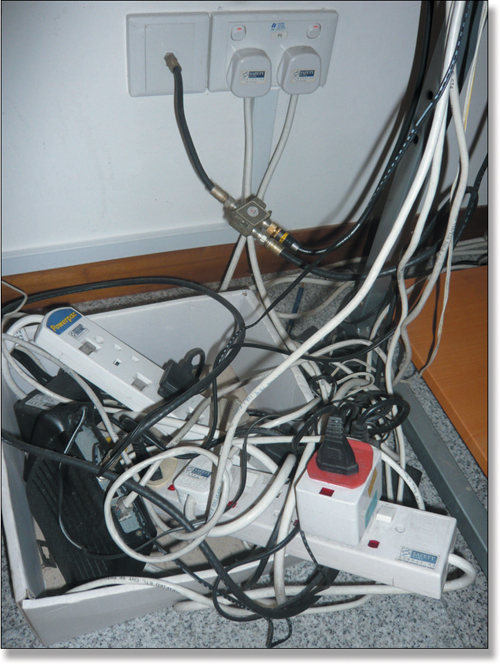
Fire hazards: dangling wires and overloaded socket points
(courtesy of Agnes Lim)
3. Pay attention to activities and events going on in the shop
• Be alert to incidents that are potential grounds for accidents. Some examples are:
– Children running around in the shop
– Children playing with trolleys (in supermarkets)
– Influx of customers during sales periods
– Crowds building up at certain counters and departments
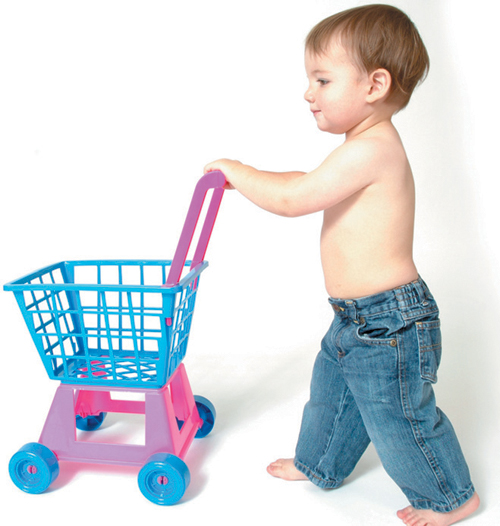
4. Use the right tools
• Tools are often used to facilitate the sales associate’s jobs, whether receiving stocks, cleaning the floor, replenishing merchandise or putting up displays.
• Learn the correct ways to use the tools.
• Use the correct tools to do the work. Examples are:
– Use a step ladder to retrieve or put items placed on high shelves or displays that are out of reach. Do not substitute a step ladder with cartons or crates.
– Use a trolley to transfer goods from one place to another.
– Use appropriate lifting equipment to lift heavy items.
– Wear protective gloves when handling hot food.
– Put on rubber boots if you need to work on a wet floor (e.g. a seafood department in supermarket).

5. Report safety problems in the shop
• It is important to highlight safety problems to the management so that rectifications can be made before accidents happen.
• Staff should have a positive attitude towards this and not be apprehensive about reporting because of fear of more work or inconvenience.
Tips to Prevent Fire Hazards
• Ensure that the main power point is turned off at closing.
• Customers should not be allowed to smoke in the shop.
• Staff should be aware of the location of fire extinguishers.
• Staff should be trained in the use of fire extinguishers, be aware of the location of the alarms and be familiar with emergency evacuation procedures.
• Ensure that exits are not locked or blocked during opening hours.

Tips to Prevent Occurrence of Accidents
• Torn carpeting, protruding counters or displays, slippery floors and other potential dangers should be reported promptly and then repaired or rectified.
• The safety of areas inside the shop and immediately outside the shop should also be included.
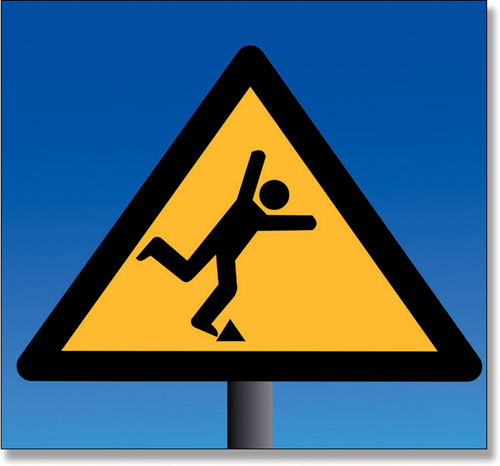
• All accidents that happened to customers and staff should be recorded in an accident log and, if necessary, a report should be sent to the relevant authorities.
• First aid facilities should be provided and the supplies should be in usable condition. Staff should also know the location of the first aid supplies.
• In the case of minor customer accidents, staff should help to relieve pain or ease the inconvenience suffered. Any major injuries, however, should be left to medical professionals.
Remedial works
Some shops have maintenance personnel to fix damaged fixtures, clean up spills and pick up broken glasses. In other shops, sales associates are required to perform such tasks. Whatever the case, different retailers observe different sets of procedures and practices when safety hazards occur. Some of the common practices are discussed below.

Procedures When Safety Hazards Occur
1. Put up a sign or barrier (yellow caution signs or orange safety cones) to keep customers away from the accident area.
2. If possible, a staff should be stationed at the accident site until the problem is resolved. Staff should warn customers to avoid the problem area.
3. Call maintenance or the manager for help if appropriate; if not, rectify the problem without delay.
4. If the problem is not major and if staff are able to do so, make minor repairs or correct the situation while waiting for help.
Procedures When A Customer is Injured
1. First and foremost, staff have to be familiar with store policies and procedures that are in place because accidents happen unexpectedly and staff need to respond quickly.
2. Don’t panic, remain calm. Staff should get a clear idea of what has happened and the extent of injury so that they can decide on the follow-up actions.
3. Attend to the customer first. Check the victim’s condition.
4. Know where the first aid kit is. It should be placed near the cash register.
5. Know what to do and what not to do to relieve the customer’s pain and discomfort.
• Keep an injured person lying down.
• Perform CPR (Cardiopulmonary Resuscitation) if necessary. If staff are not able to do so, make sure they know the staff who knows how to do it and call for that person to help.
• Do not let shoppers crowd around the victim as he needs fresh air.
• Do not touch the victim since staff may not know where the injury is.
• Do not move the victim as the movement may cause further injury.
• Do not give the victim any form of drug. Some people are allergic even to aspirin.
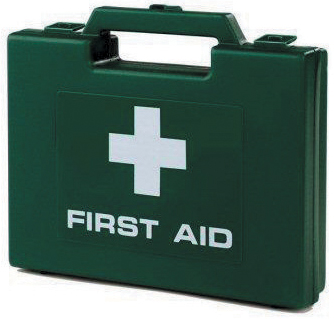
6. Notify shop security or the management.
7. Call the relevant authorities for help. Staff should keep a list of emergency contact numbers of relevant authorities. The numbers should be placed at the check out counters.
8. Provide accurate reports when required.
• Staff may be required to fill out a written form.
• File the reports for future reference and training purposes.
There are many more safety issues and guidelines that a sale associate can find out about the workplace. Some retailers have elaborate practices and procedures but the smaller shops may not have a comprehensive plan. In either case, staff can take initiatives to apply common sense and good judgment to resolve the problems when safety hazards occur. When there is a will, there will be a way.
Shop security
Theft by customers and staff reduces a retailer’s profit by a great extent. Retailers must employ effective measures and loss control equipment to keep losses to a minimum. These measures and equipments are primarily preventive in nature — they are instituted to deter theft and not to catch shoplifters.

Shoplifting
The methods used to combat shoplifting can be divided into two main categories: measures and equipment.
1. Detective and preventive measures
• If a staff is not sure whether a customer has committed theft, it is better to let the suspect go. If the suspect has nothing in his possession but is wrongly accused, this would imply a wrongful arrest. The customer can then sue the shop and the reputation of the shop would be affected.
• The apprehension procedures to follow when a staff witness a theft:
– Inform the store manager and keep the suspect under constant observation (because the shoplifter may replace an item that the staff has seen him/her take or dispose of it in such a way that the staff may not be aware of).
– The manager or the person in-charge of the shop should be responsible for apprehension. But if the manager is not in the shop or there is no senior staff around, then the staff will have to carry out the apprehension.
– A shoplifter can only be apprehended after he leaves the shop. Some customers may still be browsing and actually have the intention to pay.
– Approach the suspect tactfully by saying, “Excuse me, Sir/Madam, you have not paid for the items. Would you like to do so?” At the same time, direct him to the cashier counter.
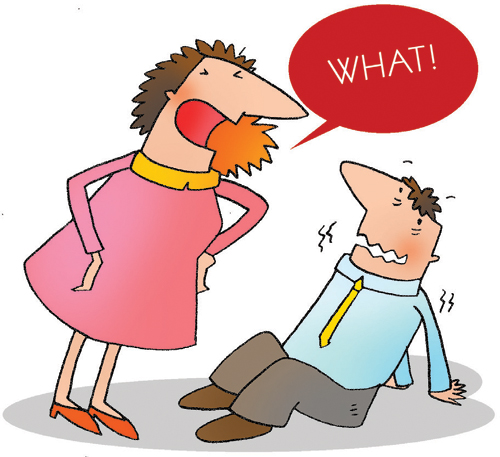
Sometimes, a customer will react violently to your allegations of shoplifting.
– If the suspect denies taking anything:
♦ Do not threaten the suspect or make unnecessary remarks because the suspect can use them against the staff.
♦ Do not use force except in self-defence.
♦ Never touch or physically search the suspect.
♦ Try to detain the suspect and call for help.
– If the suspect breaks away and runs, do not give chase. The suspect may have conspired with another person and while there is a commotion during the chase, the accomplice can easily take more items away from the shop.
– If the suspect cooperates, bring him to the office (away from the public as privacy is important).
♦ Be polite throughout the ordeal (no threats, no force, no physical search).
♦ Try to recover the merchandise.
♦ Have a store employee who is of the same sex as the suspect in the office at all times to avoid potential trouble.
♦ Try to obtain a written statement from the suspect. Ensure that he signs it and the person-in-charge signs it as a witness.
• A warning should be given to the suspect. In serious cases, a police report may be made. However, in some minor cases, a verbal or written warning may be sufficient.
• Retailers should keep a record of all such cases.
2. Loss control equipment
Loss control equipment does not fully protect against theft but it can be used as a psychological deterrence. However, for it to be effective, all staff have to be trained in its use and maintenance.
The following are some examples that retailers may want to consider.
• Closed-circuit television
• Electronic article surveillance: Wafer-like electronic or magnetic tag together with the monitoring panels
• Ink tags: Do not require the monitoring panels
• Security mirrors: Convex mirrors, one-way mirrors
• Showcase locks
• Chains
• Fitting room tags
• Intruder alarm (outside opening hours)
Staff Pilferage
Staff pilferage refers to the direct theft of stock or cash by a shop employee. It can be committed either by an individual staff member or through the collaboration between staff and delivery personnel, salespersons or customers. The following are areas that are prone to staff pilferage:
• Cashier counter where theft from tills and dishonesty with floats, petty cash and banking can occur
• Goods receiving area
• Stock room
For internal security, the following precautions should be taken:

Restricted Areas
A shop is an open area where customers are encouraged to enter to browse. However, there should be restricted areas within the shop where customers or friends of staff are strictly not allowed to enter. These areas are:
1. Inside the cashier counter
2. Inside the stockroom
3. Inside the receiving area

Power Failure/Blackout
In the event of a power failure, customers may still be in the shop. Staff have to ensure that no merchandise or cash is taken away.

1. Staff must immediately be stationed at the entrance to stop all incoming customers, informing them politely of the power failure.
2. Staff must be stationed inside the shop to help customers leave the shop.
3. Close entrances other than the main one where possible.
4. The cashier must guard the cash register.
5. All sales transactions must stop.
6. Allow customers to leave the shop only after checking their belongings. This must be handled tactfully.
Circulation and Control of Keys
Improper management of keys tempts staff to steal. Retailers must implement strict key circulation for the following areas.
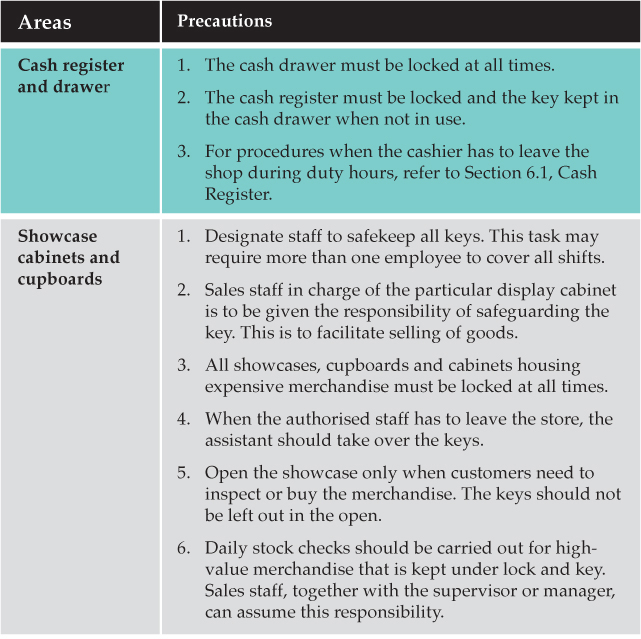
Robbery
There are two concerns to be taken into account when developing any robbery security programme. The retailer’s first concern is to train the employees on how to handle an actual robbery situation. Second, the retailer should introduce preventive measures to minimise loss in the case of robbery.
Procedures and instructions in an actual robbery situation
1. Remain calm.
2. Do not make any sudden moves.
3. Reassure the robbers that they can expect full cooperation in every way.
4. Make no attempt to apprehend the robbers.
5. Give the robbers whatever they want.
6. Attempt to make a mental note of the robber’s description (height, hairstyle, eye colour, voice, complexion, clothing and so on).
7. Keep still until the robbers have left the premises.
8. Call the police.
9. Talk only to the police and the store manager about the situation.
Do not try to fight the robber! (As this is probably what will not happen.)
Preventive measures
1. Keep as little cash in the cash register as possible. Remove excess cash frequently.
2. Maintain a minimum level of operating cash and bank all excess cash.
3. Vary bank trip routes and times.
4. Keep shop safes locked at all times.
5. Get two persons to open and close the shop — one for the actual opening and closing of the shop and the other to keep watch outside.
Conclusion
There are two main objectives: to prevent the occurrence of conditions that can cause harm to customers and staff, and to minimise inventory and money losses. All staff should be educated on the precautionary measures and corrective procedures to be adopted.

